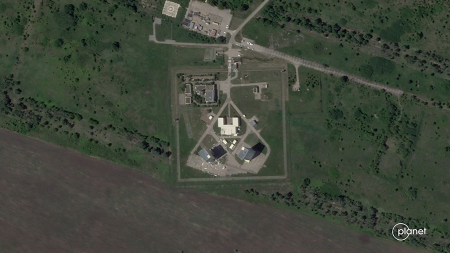Ukraine Strikes Russian Early-Warning Radars
July/August 2024
By Xiaodon Liang
The Ukrainian armed forces launched drone attacks against Russian strategic early-warning radar sites in late May, damaging at least one radar antenna. The attacks against the sites in Armavir and Orsk raised U.S. fears that Russia could misinterpret the move as an attempt to weaken the early-warning capabilities of its strategic nuclear deterrent.

The Washington Post reported on May 29 that the United States has expressed its concerns officially to Ukraine. An unnamed U.S. official cited in the report said that damage to the early-warning radars could hurt strategic stability between Russia and the United States.
The attacks occurred during a period when the White House was deliberating whether to follow NATO allies and permit Ukrainian forces to use U.S.-provided weapons systems to strike military forces inside Russia. Since then, the Biden administration has authorized Ukraine to use U.S.-provided weapons to hit back against Russian units that are attacking from across the border.
The first drone attack, launched May 22, targeted an early-warning radar site at Armavir, a city in Russia east of Crimea. Satellite imagery taken by Planet Labs and published by Radio Free Europe/Radio Liberty later confirmed that at least one of the two Voronezh-DM radars at Armavir was damaged in the attack.
The second Ukrainian operation was aimed at a Voronezh-M radar at Orsk, in southern Russia near Kazakhstan and approximately 1,500 kilometers from Ukrainian-controlled territory. No evidence of damage to this radar was visible in satellite images provided by Planet Labs and published by Radio Free Europe/Radio Liberty, although signs of fire are apparent around the facility.
Both sites host south-facing early-warning radar designed to detect ballistic missile launches against Russian territory as part of the country’s strategic early-warning system. The Armavir radar site, which began operations in February 2009, replaced older Soviet-era early-warning radar sites located in Ukraine. In January 2008, Russia terminated an agreement with Ukraine to continue receiving data from those older sites, citing unreliability. The Russian military first brought the Orsk radar online in December 2016.
An unnamed Ukrainian intelligence source told Reuters on May 27 that the two sites were targeted because “[t]hey monitor the actions of the Ukrainian security and defense forces in the south of Ukraine.” In a statement to The Washington Post, an unnamed Ukrainian official said the radars monitor aerial weaponry such as drones and missiles.
But independent analysts have argued that the role of the early-warning radar sites in Russia’s war against Ukraine likely is limited. In a series of social media posts, nuclear policy expert James Acton published graphs that show that the curvature of the earth and elevation of the Armavir antennae limit the contribution of the radar site to detecting Ukrainian ballistic missile launches against targets in a narrow sector of southern Ukraine that includes Crimea.
The Pentagon disclosed on April 24 that the United States had provided Ukraine with short-range ballistic missiles in the previous weeks. Known as the Army Tactical Missile Systems, they have a range of 300 kilometers and were first used April 17 by Ukraine to strike a Russian airfield in occupied Crimea, a Pentagon spokesperson said.
According to Acton’s calculations, the Armavir site would be able to detect drones and aircraft only under unlikely scenarios. It is even more implausible that the Orsk radar, facing Kazakhstan and covering the Middle East and western China, plays any “meaningful role in enabling Russia to detect and shoot down Ukrainian munitions,” according to Acton.
Washington also believes that these “sites have not been involved in supporting Russia’s war against Ukraine,” according to an unnamed U.S. government official cited in the May 29 Washington Post story.
Russian Deputy Foreign Minister Sergei Ryabkov warned on June 3 of an “asymmetrical response” to the drone strikes in comments to the Russian press agency RIA. He also accused the United States of acting irresponsibly in failing to prevent these attacks by Ukraine.
Dmitry Rogozin, the former Russian deputy prime minister and currently a senator representing Russian-occupied Zaporizhzhia, Ukraine, was the first official figure to acknowledge the drone strikes in a May 25 social media post.
Rogozin speculated in his Telegram post that the United States may have known about or even directed the operations. U.S. Secretary of State Antony Blinken said on May 15 at a press conference in Kyiv, “We have not encouraged or enabled strikes outside of Ukraine.”
